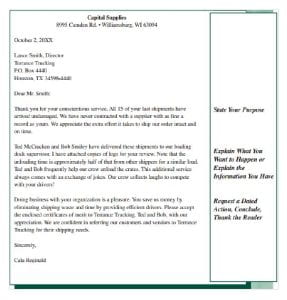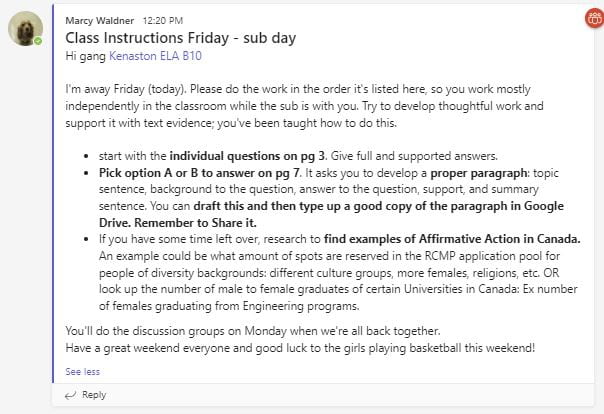You’ve recently studied a documentary of your choice that likely attempted to inform or convince viewers of some issue of society that needs addressing, whether related to poverty, education, inequality of opportunities for people, or maybe even environmental concerns.
We talked and you studied a bit how documentaries are a different type of text and need to be approached/studied with a particular strategy. You can’t lay back and just consume it like you get to with films, being able to turn your critical thinking brain off and go along with whatever plot the film offers.
With documentaries, you have to question, have to listen/watch with caution, watching for things like:
- claims made by the documentary that aren’t supported with evidence
- overly manipulative music use to impact the emotion of the viewers
- cutting and selecting only parts of a person’s speech to use what portions of it are useful and exclude what parts don’t support their narrative
- the bias the documentary makers may have; their agenda that you maybe should keep in mind while you view
- the methods of construction used to create the documentary, like using audio of interviews overtop of video, transitions by the video making programming, etc.
To work through the process of critically considering a media text like a documentary, you have this next assignment. In the same way you have to plan for your essay writing and ensure all the paragraph portions of it contribute to a single topic, you have to plan out your presentation message and supports. There is a graphic organizer you can use to do that, along with step by step suggestions of what to consider for that part of your presentation.
BEFORE YOU MAKE YOURS: You’ll complete another of our AR Assess and Reflect tasks; you’ll look at Sample Student Presentations to consider what they did well and did poorly. From this, you should have a strong understanding of how to develop a proficient presentation yourself.
Student Sample Presentations Links:
- Presentation 1
- Presentation 2
- Presentation 3
- Presentation 4
- Presentation 5
Use the handout provided to try to make a list of techniques done well and done poorly for each presentation. You’ll also be asked to rank them from best developed presentations to worst.
Here is a list of many of the feedback comments I gave to the last group of students who developed these presentations. Maybe you can learn from mistakes in design or development that others made to avoid them in your own presentation.
- each slide looks exactly the same. Want to create variety for interest of your viewer’s sake
- an extra slide is included (slide 2 – no content)
- good headings at top of slide to direct focus of topic
- use the same punctuation you would in writing – capitals, periods
- Slide 16 & 8 examples: text boxes overlap (in parts overlap a lot)
- unfinished presentation – end slides are there without content/nothing on the slides
- No images in whole presentation?
- like your coloured outline at the start and that the categories of slides for each coloured heading match (manipulation heading is green, makers heading is blue, etc) Very organized.
- very nice design choice
- like the added quote on the title slide
- good use of spatial layout
- could make font larger in some places – overall well done.
- went off topic w documentary choice and presentation
- some font quite small – hard for viewers to read
- inconsistent use of capitals, punctuation
- lots of blank space left on some slides – use it up
- no “end” – no conclusion to presentation
- really nice design/style for presentation
- missing some required content of the assignment – why you have to approach watching documentaries so differently than movies
- presentation is very short – 6 slides?
- visually a nice presentation
- not sure it should be in 2nd person point of view – Slide 2 “share with you”
- Presentations are meant to be visually engaging for viewers – your slides are a solid dark blue background. A little loud and monotonous for every slide
- “4 guys” – write out numbers that are less than 10
- background of every slide is white – underwhelming visual presentation. Presents as if it’s a word doc – blank white.
- slides developed with paragraphs – but paragraphs are for written texts, not visual ones. PPTs are for bullet points that then the speaker will elaborate on.
- starting sentences without capital letters. Be more careful
- included a summary of the documentary, instead of the deconstruction and analysis of the making/construction of this documentary as a social constructed text (manipulations)
- your slide topics don’t quite flow well one to another. You cover ideas sort of out of the order I’d expect. You mention: why they made this documentary, how it motivates viewers, and THEN you introduced the people it was focused on. A bit out of order
- slides with lots of blank space – should have included images then if you had the space for it. Visual presentation – need that image to engage with on the topic.
- gave you formative (during the development) feedback there was info required by assignment not included and additional information (distraction) added that shouldn’t be
- Slide 6 text falls behind/is blocked by images
-
Slide 7 Text box should be widened or font made smaller. Last letter of the word is broken up on the 2nd line.
manipulatio
n
-
at times you’ve got lots of space unsured on slides so you could increase font
-
should have an “End” slide. An ending
-
nice design right from slide 1
-
if this is for viewers, remove the parts of your slides/info that hint to it being an assignment (ex alphabatized labels with headers or bullets)
-
nice use of the pages – you didn’t leave blank space left
-
I like your design template choice
-
use up your space. Small font with blank spaces can be made larger. Use the space you’re given
-
some missing punctuation
-
some slides lacking support/details from documentary



